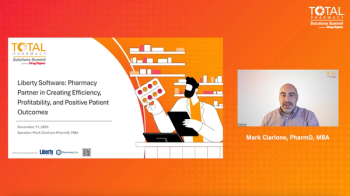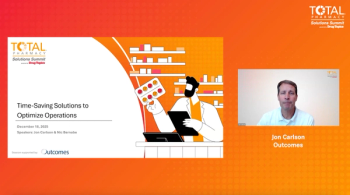
Opportunity Exists for Patient Education on Concurrent Opioid, Benzodiazepine Use
Results highlight the impact of education on patient understanding of potential adverse events.
Researchers shared results of a study on the impact of educating patients about the heightened risks of concurrent benzodiazepine and opioid use in a poster presentation at the American Pharmacists Association (APhA) 2022 Annual Meeting & Exposition.1
Because more than 30% of overdoses involve a combination of benzodiazepines and opioids, and more than 115 Americans die from opioid overdose every day, the investigators conducted this study to assess how much patients know about the increased risk of adverse events, overdose, and death associated with taking benzodiazepines and opioids concurrently. They also focused on the role of education, surveying study participants both before and after educational intervention.
The study included 9 participants (33% male; 66% female; median age 59) who had been prescribed a benzodiazepine (Xanax [alprazolam], 77%; Klonopin [alonazepam], 22%; or Ativan [lorazepam], 11%) and an opioid (Norco [hydrocodone/acetaminophen], 55%; Percocet [oxycodone/acetaminophen], 22%; Roxicodone [oxycodone], 11%; or Roxanol [morphine sulfate], 11%). Participants were surveyed both before and after receiving information detailing the increased risks associated with concurrent benzodiazepine and opioid use. Each survey asked them to rank their knowledge of the medications, the potential side effects and overdose risk of the medications, and the risks of alcohol consumption on a scale from “unaware” to “minimal” to “good” to “excellent.”
In the pre-survey, each category was divided among “excellent,” “good,” and “unaware” rankings, with “minimal” only appearing in the knowledge of overdose category at a little over 20%. Most participants ranked their knowledge as “excellent” in only the knowledge of medications category (a little more than 40%), with “good” rankings taking the lead in the potential side effects and alcohol consumption categories at nearly 60% and a little more than 40%, respectively. Around 20% of participants ranked their knowledge as “unaware” across all 4 knowledge categories. In the post-survey, no participants ranked their knowledge as “unaware” or “minimal” in any category. In both the knowledge of medications and the potential side effects categories, patients ranked their knowledge as “good” or “excellent” at around 80% and around 20%, respectively. In knowledge of alcohol consumption risks, the majority of participants (around 90%) ranked their knowledge as “excellent,” with the remaining 10% ranking it as “good,” and 100% of participants ranked their knowledge of overdose—the most divisive category in the pre-survey—as “excellent.”
Although patient education resulted in clear improvement of self-reported knowledge and understanding, only 1 participant changed their medication regimen to lower the risks of adverse events. According to the investigators, this means that patients are reluctant to change their prescribed medications even with greater awareness of the risks.1
“Overall, patients can have a good baseline knowledge, but the results of this study demonstrate how pharmacists can further improve patient understanding… and knowledge of the medications [patients] are currently prescribed,” the investigators concluded.
Reference
1. Anderson M, Garofoli GK. Evaluation of patient perceptions on coadministration of benzodiazepines and opioids. Presented at: American Pharmacists Association 2022 Annual Meeting & Exposition; March 18-21, 2022; San Antonio, TX
Newsletter
Pharmacy practice is always changing. Stay ahead of the curve with the Drug Topics newsletter and get the latest drug information, industry trends, and patient care tips.











































































































































































































